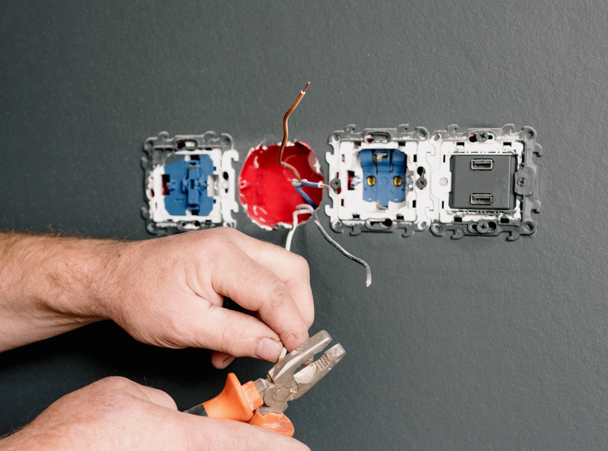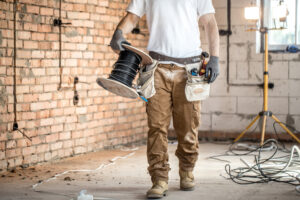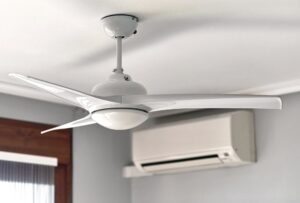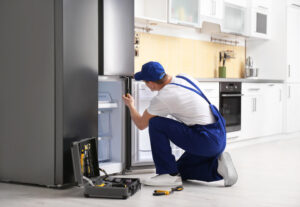Electric shocks, fire risks, and appliance hazards—these are the dangers of exposed wires that lurk within the spaces we occupy. In this article, we dissect these threats to help you understand, identify, and mitigate the risks of exposed wires without overshadowing the essential safety measures and insights detailed in the following sections.
Key Takeaways
- Exposed wires pose significant risks including electrical shocks, burns, electrocution, fire hazards, and damage to appliances, necessitating immediate attention and rectification.
- Regular inspection and proper maintenance of electrical appliances, cords, and home wiring are crucial in identifying exposed wires and preventing accidents associated with them.
- Preventing wire exposure is essential for safety, achievable through proper cord care, frequent electrical inspections, using high-quality electrical products, and ensuring to call a professional when dealing with exposed wiring.
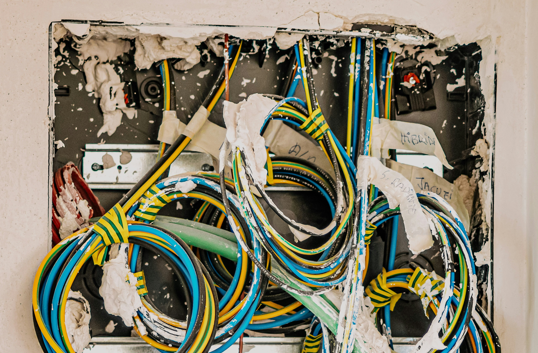
The Risks of Exposed Wires
Exposed wires, caused by age, damage, or improper installation, pose a significant danger in our homes, workplaces, and open areas. Exposed electrical wires, present a significant risk of burns, electrical shocks, or even fatal electrocution. They also constitute a fire risk, notably when ground and live wires come into contact, it’s possible for a fire to ignite that can rapidly engulf a building.
Furthermore, damaged wires threaten the functionality of your appliances.
Electrical Shocks and Electrocution
Contact with a live wire can result in an electrical shock, which, if the current is strong enough, can potentially cause cardiac arrest by disrupting the heart’s rhythm. The risk of electrical shocks is heightened in wet conditions due to increased conductivity, and shocks can occur even in dry conditions or when touching another person who is being shocked.
Furthermore, touching both live wires of a high voltage cable such as 240 volts, or electrical components that are not grounded properly, can also result in an electric shock. These injuries can result in serious injuries such as:
- burns
- pain
- numbness
- difficulty moving a limb
- muscle spasms that can be severe enough to prevent releasing the electrical source.
Moreover, they can lead to long-term health consequences including effects on the central nervous system, resulting in seizures or respiratory arrest, and delayed issues such as cataract formation.
Fire Hazards
The threat of an electrical fire is another serious concern associated with exposed wires. When the ground and live wires make contact, sparks capable of igniting flammable materials can be created, leading to electrical fires. Improper handling of live wires and the use of inadequate materials, such as regular adhesive tapes not designed for electrical insulation, further increase the risk of fires from exposed electrical wire.
In case of an electrical fire, use a Class C fire extinguisher specifically suited for electrical fires, or a Class A extinguisher if the power is cut off. If a fire extinguisher isn’t available, smother the fire using a fire blanket or water but only if the power to the area has been turned off to prevent electric shock. If a fire caused by exposed wires cannot be controlled, it’s important to evacuate calmly while staying low to avoid smoke, exit the building, and immediately dial emergency services.
Appliance Damage
The damage caused by exposed wires isn’t limited to personal injuries or fires. Your appliances are also at risk. Electrical shock originating from exposed wires in the electrical circuit can damage appliances and their components. Exposed wires within appliances may cause:
- Increased energy consumption
- Tripped circuits
- Short circuits
- Power surges
If exposed electrical wires have caused severe damage to an appliance’s cord, the entire appliance may need to be replaced to ensure electrical safety. Therefore, appliances with damaged cords or exposed wiring should not be used until they are properly tested and repaired, or replaced if irreparable.
Identifying Exposed Wires
Understanding the dangers of exposed wires is just one aspect of the issue. The other is recognising them before they lead to complications. Exposed wires can be found in various places, such as:
- the cords of electrical appliances
- extension cords
- power boards
- the wiring of homes or commercial premises
- outside
For a safer environment, it’s paramount to regularly inspect electrical appliances for any signs of damage to the power cord or electrical cord, including exposed wires.
Inside Walls
While it may seem challenging to locate exposed wires inside walls, it can be achieved safely with the appropriate tools and precautions. Before attempting to locate wires within walls, it is crucial to use voltage detectors to ensure no live circuits are exposed. Non-invasive electronic stud finders can help locate wires within walls by detecting electrical currents behind them.
However, for precise tracking, wire tracers and voltage detectors are more suitable and commonly used by professionals. If you’re undertaking renovations or repairs, blueprints of the building provide valuable information for locating wires. Manual tracing can also be done using the method of flipping circuit breakers and checking for active power at outlets.
Appliances and Power Cords
Appliances and power cords often harbor exposed wires. Power cords can become damaged through fraying, twisting, or kinking, particularly at the connection between the plug and the cord. Damage can accumulate over time when appliances are unplugged by pulling on the cable, leading to exposed wires.
Conducting regular inspections and having appliances tested and tagged, particularly in commercial settings, can identify and prevent the risks associated with exposed wires. If there is doubt about an appliance’s condition, it should be professionally assessed or disposed of, as makeshift solutions like duct tape do not safely address the problem of exposed wires.
Outdoor Wiring
Despite frequently being overlooked, it’s equally vital to be vigilant for exposed wires in outdoor wiring. Exposed wires outdoors are often found near electrical outlets, lighting fixtures, or within damaged conduit and can be identified by visual inspection for any signs of damage or wear. They pose significant dangers, as they may interact with natural elements like water, leading to risks of electric shock or fire hazards, especially after severe weather events.
To safely identify live outdoor wires, circuit and wire tracers with radar detection, as well as voltage detectors, are crucial tools. Preventative measures include encasing wires in protective conduit, using wires rated for exterior use, and conducting regular visual inspections to spot early signs of wear.
Preventing Wire Exposure
Although it’s crucial to identify and manage exposed wires, prevention invariably trumps remediation. There are several steps you can take to prevent wire exposure and maintain a safe living environment.
This includes:
- Using wire caps to safely cover loose live wires, particularly during periods of electrical work like renovations or repairs
- Employing wire nuts to terminate single wires, which is a safer approach to handle repairs without needing to cut the power supply
- Proper storage and maintenance of electrical appliances and cords also contribute to preventing wire exposure.
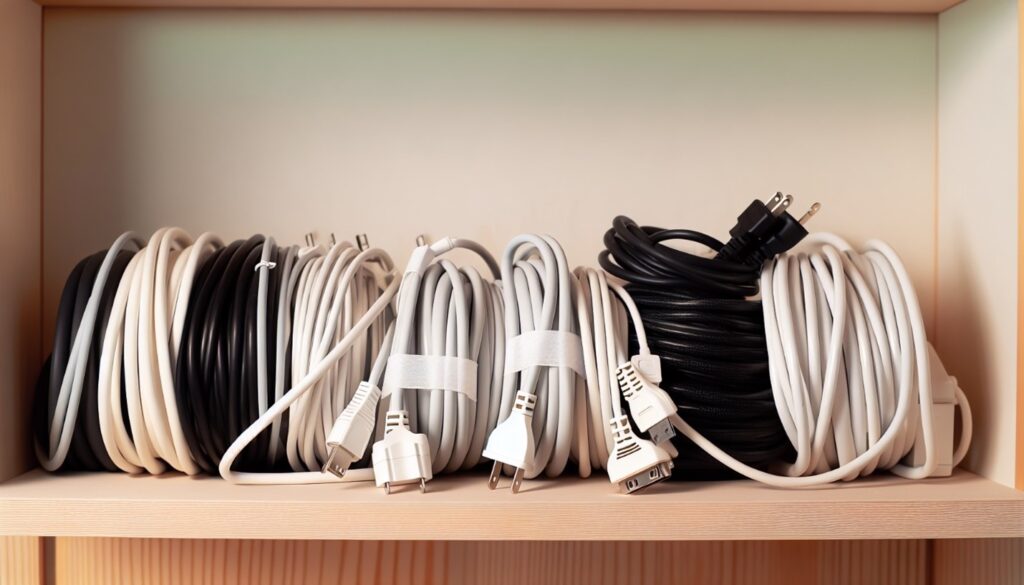
Proper Cord Care
Proper cord care is a straightforward and efficient means of preventing wire exposure. You can use coaxial cable staples to fasten cables to walls and keep them secure and flush along baseboards or around doorways and window frames. If you need to guide cords along delicate surfaces without causing damage, install Command strips that have strong adherence and clean removal capability.
Organize cable bundles with:
- Zip ties or Velcro One-Wraps, ensuring not to kink the cords, to efficiently control wire mess
- Painter’s tape as a temporary measure to hold cords against surfaces, but it may not be suitable for extended use
- Label maker or bread bag tags to ensure cords can be easily identified.
Some tips for organizing and maintaining your cables:
- Store unused cables in a hanging shoe rack or neatly bundled inside toilet paper rolls to keep them from tangling.
- Avoid pulling plugs by the cord, which can damage the plug or outlet.
- Teach children to alert an adult if they notice any electrical safety issues.
Regular Inspections
Frequent electrical safety inspections, particularly in older buildings, play a key role in preventing wire exposure. These inspections help identify hazards such as damaged wires that can lead to severe accidents and wire exposure. Appliances should be tested and tagged regularly to ensure they are safe to use and do not have exposed wires.
During these inspections, it’s important to:
- Confirm that wire caps and nuts are securely in place, ensuring proper electrical connections
- Give special attention to electrical system components such as service neutral links and overhead mains connection boxes
- Verify the functionality of the voltage tester on a known live outlet to prevent false negatives
- Proceed with testing labels on breaker panels for accurate marking
Quality Electrical Products
Another effective approach to prevent wire exposure is investing in high-quality electrical products, including electrical wire. High-quality electrical products are designed with safety in mind, featuring better insulation and more durable materials that reduce the risk of wire exposure and electrical fires. Quality electrical products often adhere to higher manufacturing standards, which can offer better performance and reliability, minimizing the occurrence of electrical malfunctions.
Investing in high-quality electrical products can lead to cost savings in the long run due to their durability and the reduced need for frequent maintenance or emergency repairs. Using quality electrical tape, wire caps, and wire nuts is essential to ensure a secure fit and avoid potential hazards due to poor materials or improper application.
Outdoor wiring should:
- be rated for exterior use
- have UV-resistant insulation
- be able to withstand temperature changes
- be encased in protective conduit with waterproof seals at connection points to prevent wire exposure from environmental factors.
Dealing with Exposed Wires
In spite of all precautions, you might occasionally come across exposed wires. Knowing how to deal with them safely and effectively is crucial. Upon discovering exposed wires, do not attempt DIY repairs but immediately contact a professional electrician to assess and resolve the issue.
Before any work on exposed wires can commence, ensure that the electrical power to the affected circuit is turned off to prevent the risk of shock or further damage. Appliances that have exposed wiring should not be used and must be disconnected from the power source until they have been inspected and cleared or repaired by a qualified electrician.
Shutting Off Power
The first crucial step before anything else is to disconnect the power supply to the affected area. To do this, follow these steps:
- Locate the home’s main power switch or circuit breaker box.
- Always turn off electricity at the circuit breaker before addressing any issues involving electrical wiring.
- Ensure that the specific circuit breaker for the area where the exposed wire is located is switched off.
If you cannot identify the correct circuit breaker, it is safer to turn off the main power to the home to avoid any risk of electrocution. Use a voltage tester to confirm that the power is indeed off before beginning any work on the wires. And finally, affix a note or lock on the breaker box to ensure that no one accidentally turns the power back on while you are working.
Temporary Solutions
As you wait for a professional, there are a few interim measures you can adopt to reduce the risk from exposed wires. Electrical tape is a simple method to temporarily cover live exposed wires until a permanent fix can be applied, and it can also provide extra insulation over capped wires or where wires do not fit the cap. Wire connectors or wire nuts can be used to safely cap off minor exposed wire ends as a temporary solution.
For exposed wires with intact but damaged insulation, heat-shrink tubing provides an effective temporary measure. The tubing should be selected to fit the wire, cleaned, cut to the appropriate length, slid over the wire, and then heated until it seals around the wire securely.
Calling a Professional
Most importantly, ensure you always enlist the expertise of a professional electrician to handle exposed wires, like us here at Mr Sparky in Sydney. In emergency situations such as sparking outlets or a sudden loss of power, it’s critical to immediately call a professional electrician without attempting to handle the situation personally. We can provide emergency electrical services and are equipped to repair cables with exposed wiring.
For special cases such as doubt about the safety of an appliance, outdoor exposed wires, or exposed wires within the structural premises, a licensed electrician should be contacted immediately, and these hazards should be left untouched until professional help arrives. Preparedness benefits safety; keeping the contact information of a reliable emergency electrician readily accessible can ensure a swift response in the event of any electrical emergency.
Choose Sydney’s Leading Electricians at Mr Sparky
Understanding and addressing the dangers of exposed electrical wiring can seem daunting, but it doesn’t have to be. With the right knowledge and precautions, you can significantly reduce the risks associated with exposed wires. Remember, the key to electrical safety is a combination of regular inspections, quality electrical products, proper cord care, and educating your family members.
Remember, electrical safety is not a one-time task but an ongoing commitment. Keep this guide handy and refer back to it periodically to ensure you and your loved ones remain safe. Don’t let the dangers of exposed wires shock you into action—be proactive and make electrical safety a priority today!
And if you need help and you’re based in Sydney, call us here at Mr Sparky on 1300 770 771.


